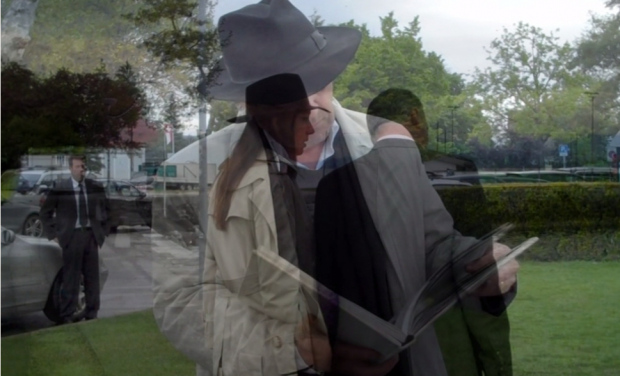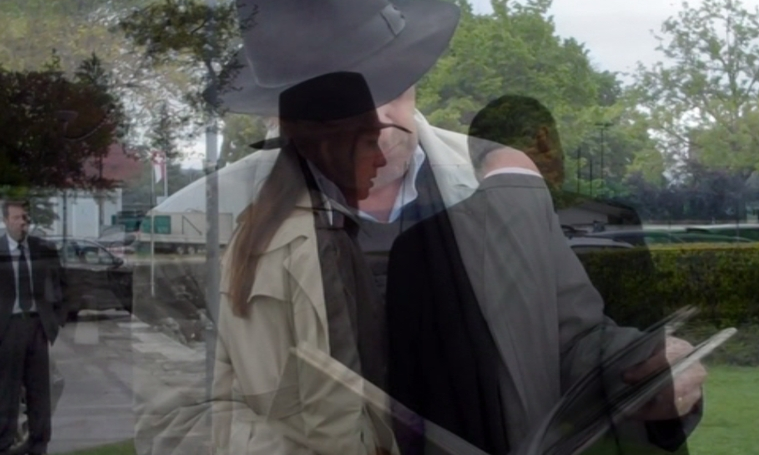
Dailies is a round-up of essential film writing, news bits, and other highlights from across the Internet. If you’d like to submit a piece for consideration, get in touch with us in the comments below or on Twitter at @TheFilmStage.
On December 27th, a free live reading of The Interview script will be held in New York City at the Treehouse Theater.
At The Dissolve, Calum Marsh on the best shot of the year:
There’s a single shot in Jean-Luc Godard’s Goodbye To Language so astonishing that the sold-out crowd I saw the film with gasped in unison. Perhaps a generation of blockbuster entertainment and stock response has deadened the word, but the only way I can think to describe it is “awesome,” in the literal sense. It inspires awe. At the thousand-seat Ryerson Theater, where the film made its North American première this September, the surprise and delight were audible, in the form of exclamations and spontaneous applause. For a moment, it was less like a movie than a magic show. I sat mouth agape, stupefied. I felt like I’d just seen someone levitate.
In a related post, No Film School on what Breathless can teach you about jump cuts and editing:
Most mainstream (read: Hollywood) films made use of continuity editing, only breaking the illusion of reality when a certain effect was desired, though whole movements of avant-garde and art cinema far too numerous to go into here experimented with new and exciting techniques in film production. But it wasn’t until 1960, with the release of Jean-Luc Godard’s first film, Breathless (or, À bout de Souffle, “out of breath”) came out and shocked audiences, that the jump cut as we know it today would enter the popular film vernacular.
Watch Kathryn Bigelow and Scott Z. Burns discuss their new film Last Days (which can be viewed here):
At RogerEbert.com, Scott Jordan Harris on the record-breaking Indian film that has been in theaters for 1,000 consecutive weeks:
Aditya Chopra’s “Dilwale Dulhania Le Jayenge” is one of the world’s favorite films. Released in 1995, the romantic melodrama is still in its original theatrical run and this week reaches a remarkable milestone: 1000 consecutive weeks screening in a single cinema, the Maratha Mandir in Mumbai. To say that “DDLJ,” as it is commonly called, is the longest-running film in Indian history is to understate its astonishing achievement. It became the longest running-film in Indian history when it surpassed the five and half-year benchmark of the action classic “Sholay”. That was 14 years ago.

